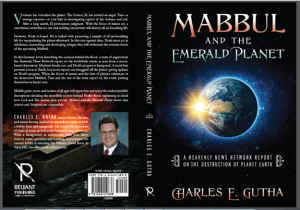“Twenty years ago, El selected a human being, Noah, to build
a box designed to store and preserve samples of all air-breathing
creatures residing on Earth. This is interesting because even though
God can do anything Himself, He chooses to use the hands and
feet of His obedient children to accomplish His works. It was that
way from the beginning: when El placed Dusty in the garden to
care for the garden and all the animals. It was that way for humans,
and it is that way for us. El desires to do His work through us.
“Today, not only has Noah bought a forest, he has built a log-
ging complex to harvest and sell the crop. Approaching Noah’s for-
est from the southwest, we enter a wye at the head of the driveway
leading to Noah’s compound. He calls his drive Sawdust Trail.
“The trail leads first to another drive and the parking lot of a
large lumber store. From here, Noah retails and wholesales hard-
ware and lumber of all sizes. It includes a millwork where varieties
of decorative wood shapes are made and sold. To the south or the
right of this lumber store is a large office building. Signs indicate
this is the architectural and engineering firm. Continuing down
the lane, behind the lumber store, we see the large yard where he
displays cured lumber. Beyond that is Noah’s curing yard, of even
greater size. Here, the lumber cures for two years before it is moved
to the selling yard.
“Across the lane from the curing yard, to the left of us, is Noah’s
house. Beyond that is the bunkhouse where the lumberjacks sleep.
A few small buildings are behind this. A long way down the road
is the mess hall, another bunkhouse, and a blacksmith shop. This
second bunkhouse is for the sawmill crew. Finally, there is a large
yard where scraps are stored. This scrap is cut into firewood and
either used in the smithy or sold. The entire complex stops at the
shore of a lake where whole logs are floated through a small canal
“I see Noah talking with someone. Let’s listen in.” Tom turned
from the camera to look at two men standing outside the split-rail
fence surrounding the mill yard.
“And can you build blades large enough to cut the big trees?”
asked Noah, the tall man with one foot on the bottom rail lean-
ing against the top rail. He had sparkling gray eyes and dark busi-
ness-cropped hair.
“How big?” asked the ruddy man. He sported large biceps,
well-sculptured abs, and a darkened face revealing he spent many
days swinging heavy hammers over hot fires.
“The big ones. Say twenty feet in diameter.” Noah stood,
stretching his arms out as wide as he could.
“I knew you was going to ask for that, one day,” said the shorter
man, kicking some dirt. “It’ll take a good twenty-six-foot, two-
man saw for a twenty-foot tree.” His leather face revealed deep lines
as he squinted in Noah’s direction. “Our new iron smelting process
is good, but still . . .”
“If anyone can do it, Smitty, you can.” Noah smiled back at
him. He pulled a stem of grass, placing it in his mouth.
“Humph. And how ya goin’ to handle such a tree?” asked the
stout man, waving his finger at Noah. “How ya goin’ to fell it with-
out shatterin’ the core?” He waved his left hand toward the forest.
“And who’s gonna move it here if ya can cut through its base? Have
ya stopped to consider that? Have ya? Yar mill ain’t gonna handle
trees them sizes!”
“Build me one that can.” Noah leaned back over the fence.
“What?” The little man threw up his hands.
Noah turned to him. “Build me a mill large enough to handle
the big trees.”
“Me and my . . . I shoulda knowed you was gonna ask me for
that next.” With that he kicked the dirt and started walking away.
Noah looked over the fence toward the lake. “We have the best
 Next page: From Chapter Fourteen
Next page: From Chapter Fourteen